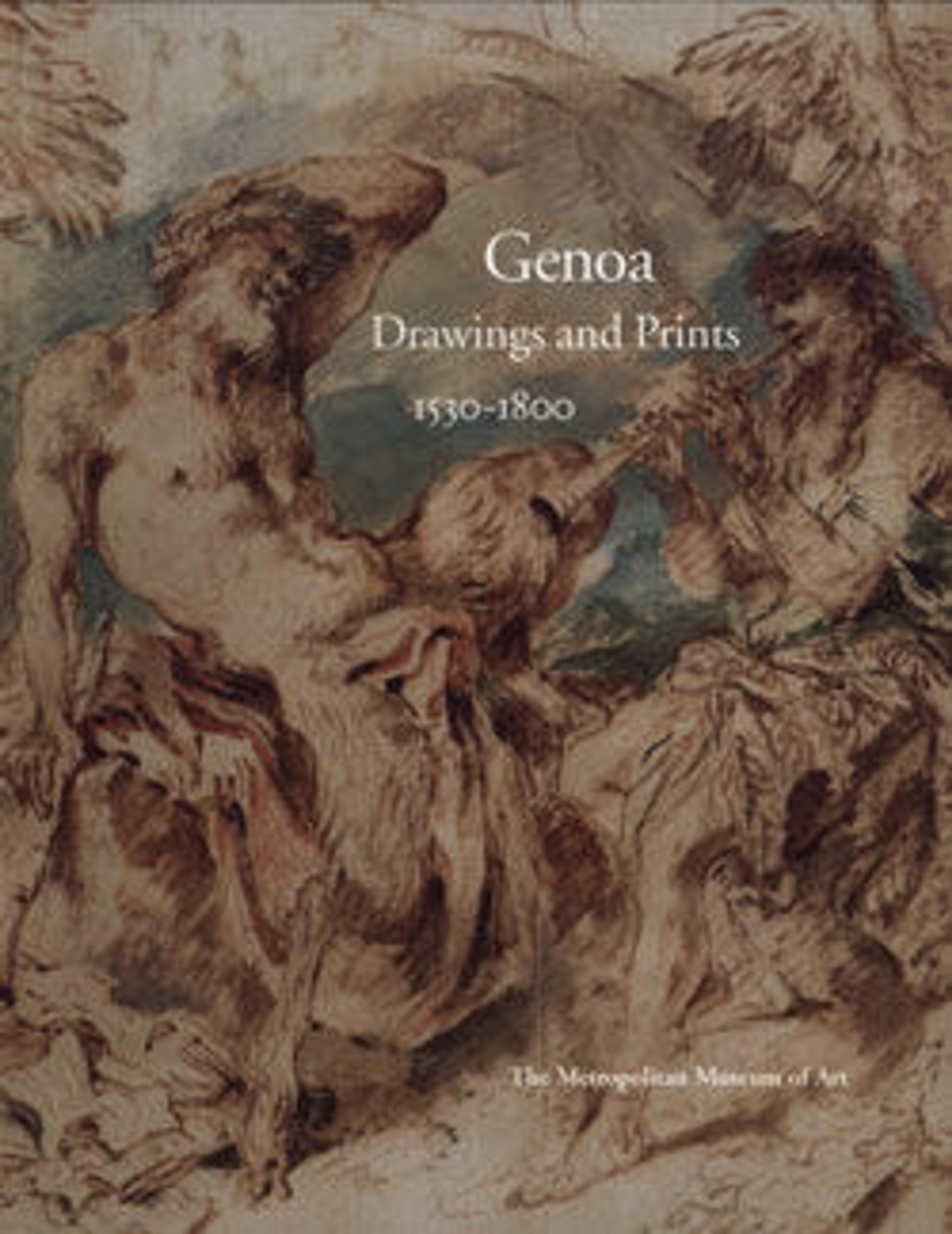Apollo Driving the Chariot of the Rising Sun
This composition drawing depicts Apollo, god of the sun, driving the chariot of dawn seen in a relatively frontal view. The sheet is inscribed "sole oriente," to indicate the rising of the sun on the east. Since the ink of the inscription appears to be of the same hue as the darkest passages in the outlines of the drawing, this could be an iconographic inscription by the artist himself. A companion drawing, representing the chariot of Apollo (erroneously identified as the chariot of Phaeton), but seen in a view from behind to indicate the setting sun on the west, is inscribed in a complementary manner, "sole cadente." It sold at Sotheby's, London on May 21, 1963, lot 131. A copy of the "sole cadente" composition, incorrectly attributed to Antonio Tempesta, is in the Ecole Nationale Superieure des Beaux-Arts, Paris (Ancien fonds no. EBA 384). That design derives from an original by Luca Cambiaso as well.
To judge from both its iconograph and its foreshortening, this composition was probably preparatory for a fresco on the ceiling of a salone in a palace.The squaring grid in red chalk over the figural drawing suggests a relatively monumental scale. The scenes thus likely refer to the sun god Apollo, and the moon goddess, Diana, driving their chariot across the skies. Cambiaso's associate Giovanni Battista Castello, il Bergamasco, frescoed the subject about 1552 on the walls of he Villa Giustiniani Cambiaso, Genoa.
(Carmen C. Bambach, 2014)
To judge from both its iconograph and its foreshortening, this composition was probably preparatory for a fresco on the ceiling of a salone in a palace.The squaring grid in red chalk over the figural drawing suggests a relatively monumental scale. The scenes thus likely refer to the sun god Apollo, and the moon goddess, Diana, driving their chariot across the skies. Cambiaso's associate Giovanni Battista Castello, il Bergamasco, frescoed the subject about 1552 on the walls of he Villa Giustiniani Cambiaso, Genoa.
(Carmen C. Bambach, 2014)
Artwork Details
- Title:Apollo Driving the Chariot of the Rising Sun
- Artist:Luca Cambiaso (Italian, Moneglia 1527–1585 Madrid)
- Date:1527–85
- Medium:Pen and brown ink, brush and brown wash, over black chalk; squared in red chalk
- Dimensions:9 9/16 x 14in. (24.3 x 35.5cm)
- Classification:Drawings
- Credit Line:Rogers Fund, 1962
- Object Number:62.168
- Curatorial Department: Drawings and Prints
More Artwork
Research Resources
The Met provides unparalleled resources for research and welcomes an international community of students and scholars. The Met's Open Access API is where creators and researchers can connect to the The Met collection. Open Access data and public domain images are available for unrestricted commercial and noncommercial use without permission or fee.
To request images under copyright and other restrictions, please use this Image Request form.
Feedback
We continue to research and examine historical and cultural context for objects in The Met collection. If you have comments or questions about this object record, please contact us using the form below. The Museum looks forward to receiving your comments.
